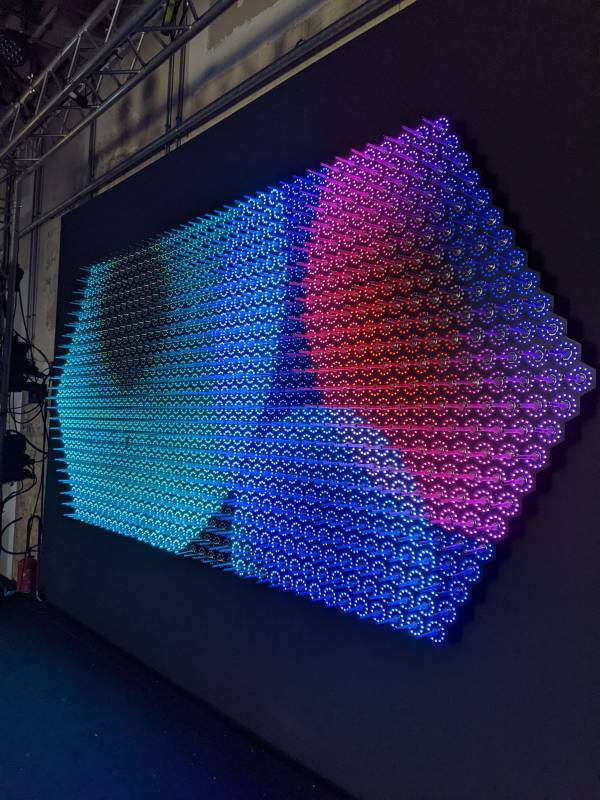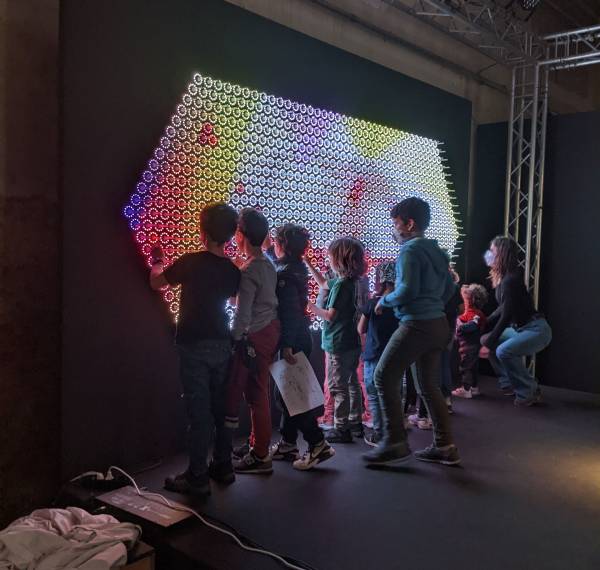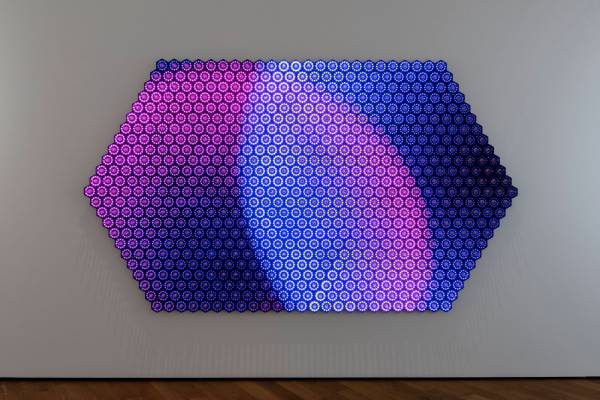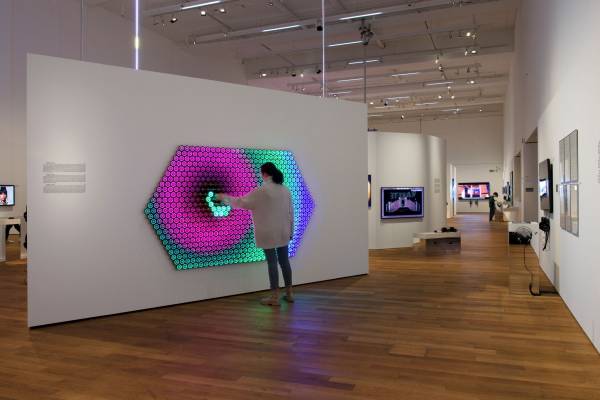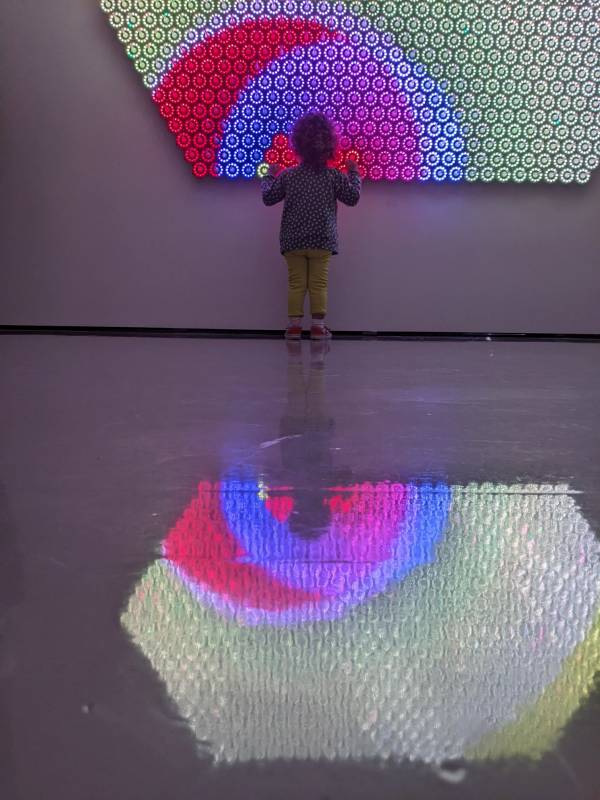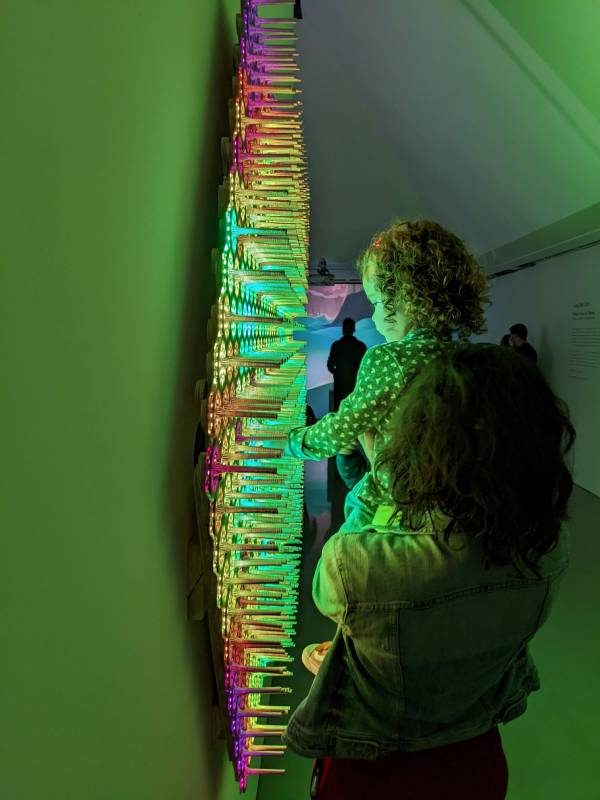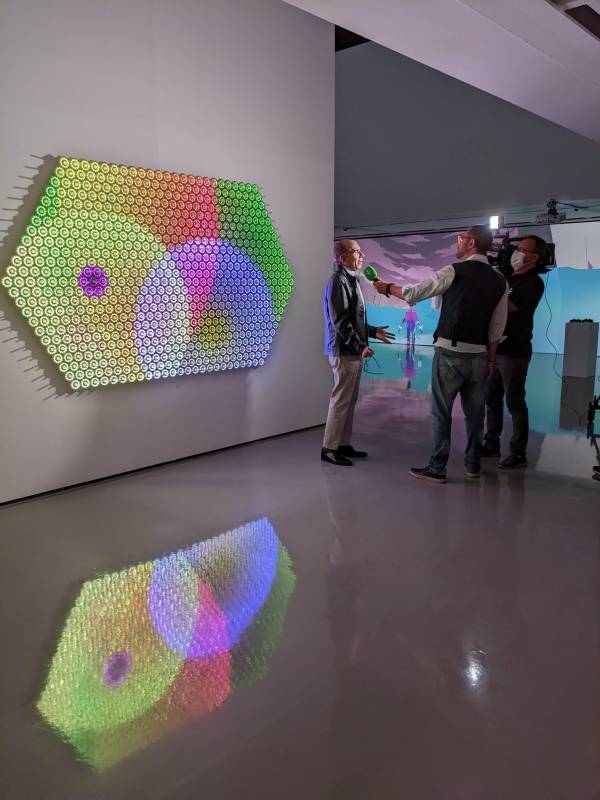Quantum Jungle
Quantum Jungle is an interactive art installation that playfully visualizes Quantum Physics concepts on a large wall filled with hundreds of novel touch-sensitive metal springs and thousands of LEDs. It calculates Schrödinger's Equation to model the movement of a quantum particle, and demonstrates concepts such as superposition, interference, wave-particle duality, and quantum waveform collapse while maintaining a playful approach that attracts children and adults alike, sparking curiosity and wonder.
Technical Description
Quantum Jungle is a modular art installation made up of several large PCB panels with LEDs and touch-sensitive metal springs, mounted on a wooden base that is hung on a wall. Signal processing happens on a series of Arduinos, while visuals are prepared and sent from a PC via ethernet to the Arduinos and subsequently the LEDs. All parts have been specifically designed and assembled by Robin Baumgarten. The software is a custom C# program that interfaces with the quantum algorithms (written in python) provided by the scientific team.
A typical interaction with Quantum Jungle is designed to look like this:
- In the beginning, the installation is idle and displays expanding rings as an idle animation
- When the audience interacts with the springs, these springs are chosen as starting positions of the quantum particle (called a superposition). Expanding circle effects accompany these touches. Each chosen spring stays illuminated.
- Once the audience is finished choosing springs, the quantum simulation starts. Schrödinger's Equation determines the movement of the quantum particle. Since it is not observed, we don't know it's actual position, but rather it is in a quantum state and in many positions at once. The probability distribution of these positions is visualised as a colourful expanding cloud on Quantum Jungle, where the brightness of each ring corresponds to its probability of the particle being in this position.
- To 'observe' the particle, the audience can touch another spring. This collapses the quantum state and the particle becomes a classical particle in a single location, which is displayed on the wall, accompanied by a particle effect.
- After a short while, Quantum Jungle returns into its idle state.
This whole process is related to the thought experiment of Schrödinger's Cat, which many might be familiar with.
Follow me for my newest experiments: Follow @Robin_B
